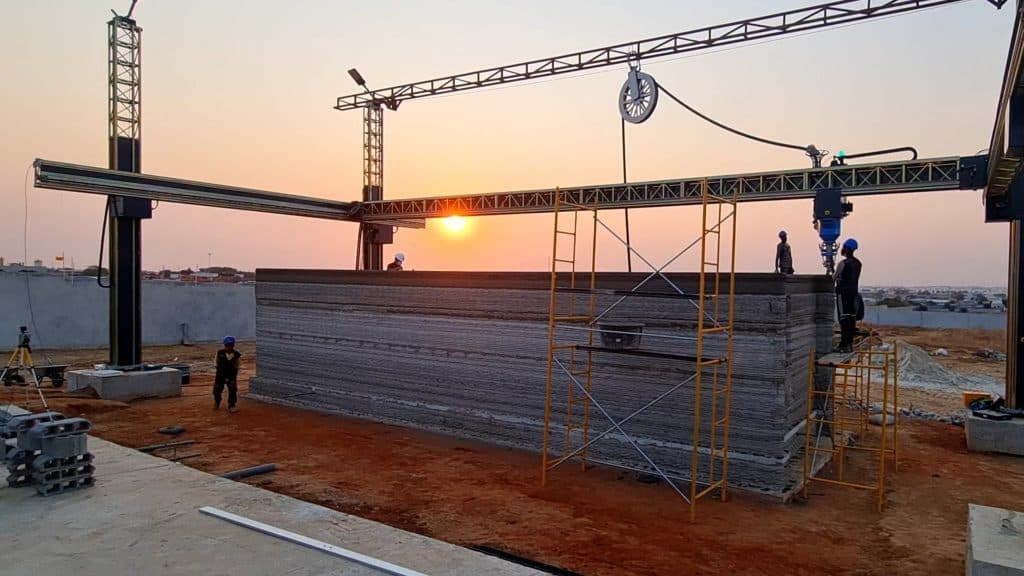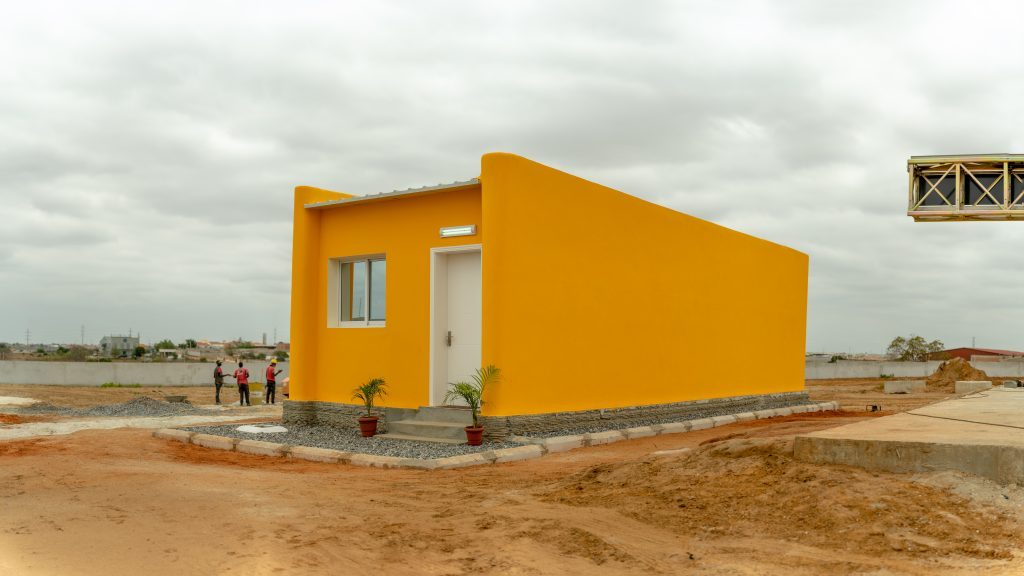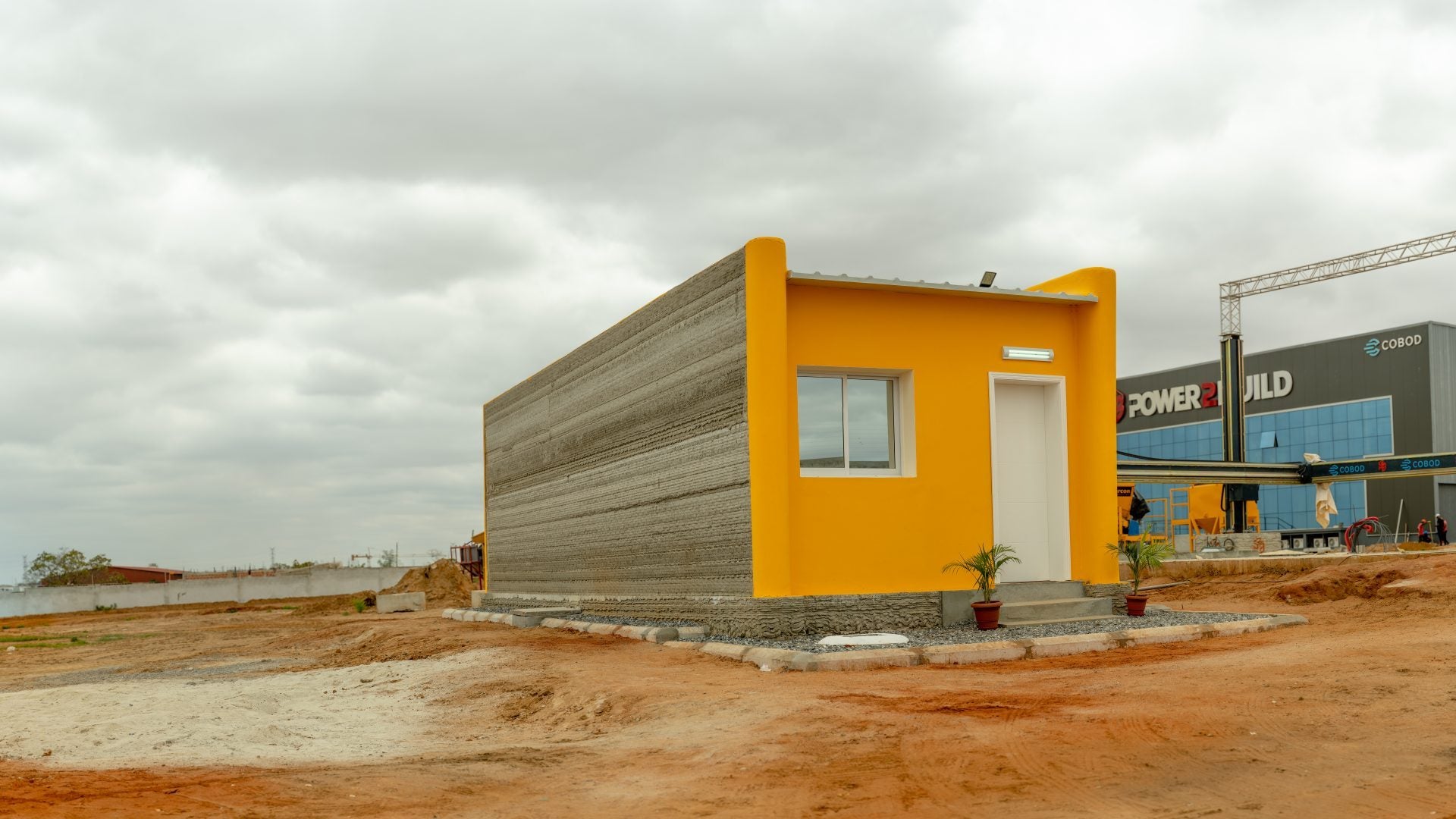3D concrete printing of building shells has grown considerably in the last years, with more and more building shells being 3D printed, even buildings with up to 3 floors and windmill towers. However, so far all projects have been limited to one-offs or the 3D printing of a few buildings. The high cost of the 3D printing mortars has prevented widespread and large-scale application on multi-unit projects, including large scale affordable housing projects. The concrete revolution is about to change this.
The use of 3D printing in construction projects has gained ground on a global scale given that this new construction method has the potential to deliver significant savings due to efficient use of materials and less need for labor combating an increasingly scarce availability of skilled labor as well as offer new advantages in terms of form freedom. However, virtually all projects to date have been printed, not with real concrete, but with 3DCP bagged / ready-to-mix dry mix mortars characterized by a very high cement content.

Various suppliers have emerged on a global scale to assist the adoption of 3D printing by providing convenient ready-to-mix dry mix mortar solutions, that are relatively easy to apply in the various 3D printers and demonstration projects. But the problem has been the price, as dry mix mortars typically are 5-10 times more expensive than ordinary ready-mix concrete. So far, none of the globally leading cement and concrete companies has been able to deliver a solution, which would enable the 3D printing of an ordinary type of concrete and to the same price as ordinary concrete, but now CEMEX in cooperation with globally leading 3D construction printer supplier COBOD has launched such a solution, called D.fab:
Davide Zampini, CEMEX Head of Global R&D, explained: “CEMEX has been monitoring the developments in 3D printing for some time, but it was important to intervene with a significant innovation and improvement. Although we recognize that it can be convenient to 3D print with dry mix mortar materials, our R&D focus was not to go down that route, because we believe that it is important to make 3D Printing accessible. Together with COBOD we have developed the material and technological solution for 3D printable concrete. CEMEX’s D.fab admixture range enabled the development of an innovative 3D printing approach, yet offer a material comparable to conventional concrete.”
The solution from CEMEX and COBOD consists of a system of admixtures, where specific chemicals are introduced at the batching plant and designed to make the concrete fluid and easy to pump. Whereas another admixture, which speeds up curing, is added through the dozing unit at the printhead of COBOD’s printers, and makes it possible for the concrete to gain shape instantaneously and buildable. –. The solution only requires central sourcing of less than 1% of the concrete mix, while more than 99% of the concrete can be based on local available raw materials including the cement, which can come from any cement maker, leading to very significant cost savings compared to 3D printing mortars. The new solution was first proven in a suburb to Luanda, the capital of Angola, where it was used to 3D print Angola’s first 3D printed building, a 53 m2 (570 sf) house.

Ricardo Almeida, CEO of Power2Build, Angola said: “To solve Angola’s and Africa’s affordable housing crisis requires not only a technology, that can build faster and can work with far less skilled labor, but also materials that are as cheap as ordinary concrete. For our first building for the walls we used 12 m3 of concrete of 80 Euro/m3, so our total cost for the concrete materials for the 53 m2 house was less than 1.000 Euro. With such low materials prices, the strength and quality of concrete combined with the speed and automation of 3D printing, we can help solve the affordable housing crisis in Angola and elsewhere.”
Commenting on this milestone for the widespread adoption of the 3D construction printing method, Henrik Lund-Nielsen, Founder & General Manager of COBOD International stated: “When we began 3D construction printing back in 2017, where we 3D printed Europe’s first 3D printed building, we made the concrete recipe ourselves. We had to use a lot of cement to get it to work, with the consequence that our recipe was too expensive and not CO2 friendly. While we have been happy to help various cement and concrete manufacturers develop dry mix 3D printable mortars, we have also insisted on that a solution for making real concrete made from local available materials would be needed for mass application of our technology. We are more than pleased that CEMEX took on the challenge, and proud that we in cooperation could develop the new solution. Prices for materials will come down from the typical 700-900 Euro/m3 for3D printable mortars to now 60-90 Euro/m3 depending on geographic location. This is equivalent to a reduction in cost of materials of about 90% and is truly a game changer for our industry and the construction industry globally”.
